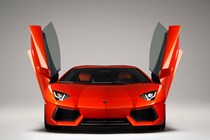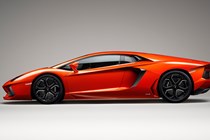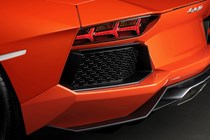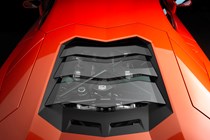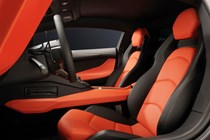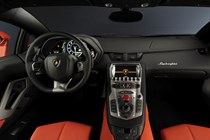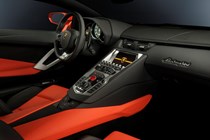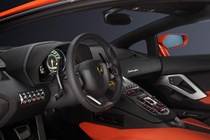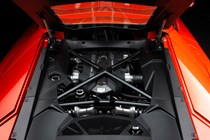
Lamborghini Aventador Coupe (2011-2022) engines, drive and performance
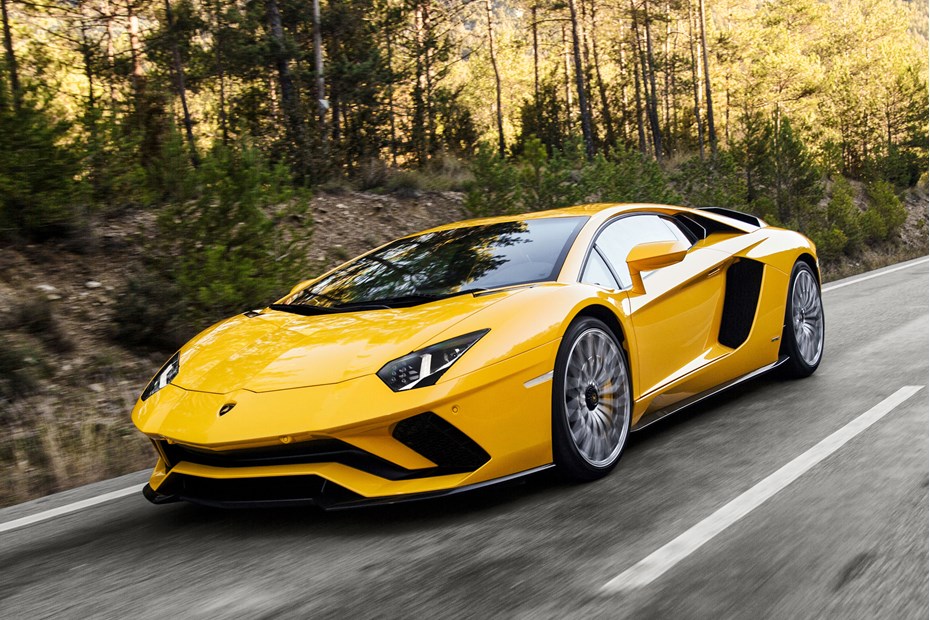
The Aventador S produces 730bhp and 509lb ft from its 6.5-litre V12 engine. That results in stunning performance: 0-62mph in 2.9 seconds, 0-124mph in 8.8 seconds and a top speed of 217mph. The SV increases performance slightly to 740bhp, but crucially it also sheds 100kg. It’s why the SV takes a tenth of a second off the S’s acceleration figures, although it doesn’t improve on its top speed.
Unlike most rivals, the V12 engine is naturally aspirated, and therefore not boosted by turbochargers. This means the torque of the engine is comparatively small in relation to its power output, and its peak is delivered much higher up the rev range – 509lb ft of torque 5500rpm compares with 553lb ft from 2100rpm for the Porsche 911 Turbo S, which has six fewer cylinders.
But neither Aventador could be described as lethargic at lower revs, and the benefit is a searing power delivery and soundtrack more akin to F1 cars before they too were downsized and turbocharged. The Aventador pulls keenly from very low revs, the throttle pedal zings with response – turbo engines can feel mushy – and builds in speed and intensity until a screaming 8400rpm, just 100rpm off the redline. It might not be the most up-to-the-minute powertrain, and yet it’s one of the very finest production engines in existence.
The seven-speed automated manual gearbox is standard equipment. As its name hints, this is effectively a manual transmission, but with only a brake and accelerator pedal, a computer taking car of clutch duties. You can select auto or manual modes, the latter controlled with paddleshifters.
The gear changes are extremely fast and direct at full speed on the racetrack, but can lag a little at lower speeds. Lamborghini has made these lower-speed shifts smoother on the S model, but they remain off-the-pace for refinement compared with dual-clutch technology.
The Aventador has a choice of three drive modes: Strada (street in Italian), Sport or Corsa (Race), and the gear shifts, chassis settings and steering feel become progressively firmer and more aggressive as you progress through them. To this the newer Aventador S also adds Ego mode, allowing the driver to combine powertrain, chassis and steering settings.
If the Aventador’s chassis disappointed when the car was first launched in 2011, the S marked a total transformation. The key is a rear-wheel steering system. This technology has been around for decades, but has recently found favour again. The Aventador’s rear-wheel steering turns the rear wheels in the opposite direction to the fronts below 81mph to make the car feel shorter and more nimble, but in the same direction above that speed to make the car feel longer and therefore more stable.
The introduction of rear-wheel steering adds a real sparkiness to the Aventador’s handling, helping it jink deftly left and right with the driver making only small inputs at the wheel. The old car would feel rather stubborn in comparison, and the steering felt much slower.
The SV gets along fine without rear-wheel steering, its low weight and incredibly expensive Ohlins shock absorbers leading to a much more agile feeling and improved composure compared with early Aventadors.
All-wheel drive helps both Aventadors put down their vast power cleanly, but it’s extremely rear-biased with up to 90% of the available power going to the rear wheels. It allows the Aventador to strike a great balance between the purity and response of rear-wheel drive in most circumstances, with the composure of four driven wheels when the rear tyres begin to lose grip.
The Aventador uses a variable-rate steering system, meaning the steering ratio becomes progressively faster the further you turn it off-centre. This makes for stability in a straight line at high speed, but extra responsiveness from smaller inputs on a twisting road. It feels entirely natural, the speed progressively increasing, and the power assistance makes this an easy car to manoeuvre in town.



